
The Ultimate Iceland - Greenland Trek - GRL851
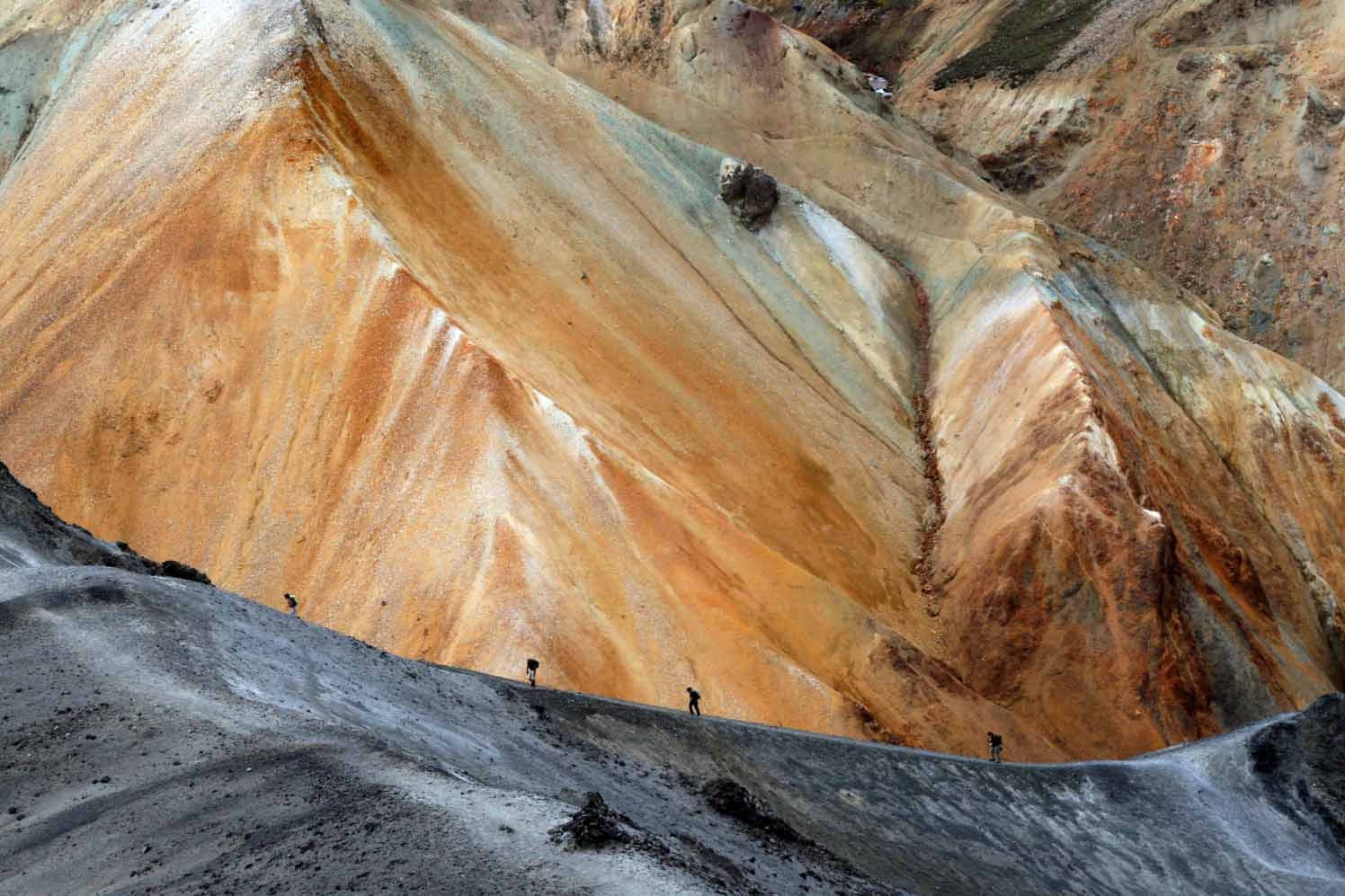
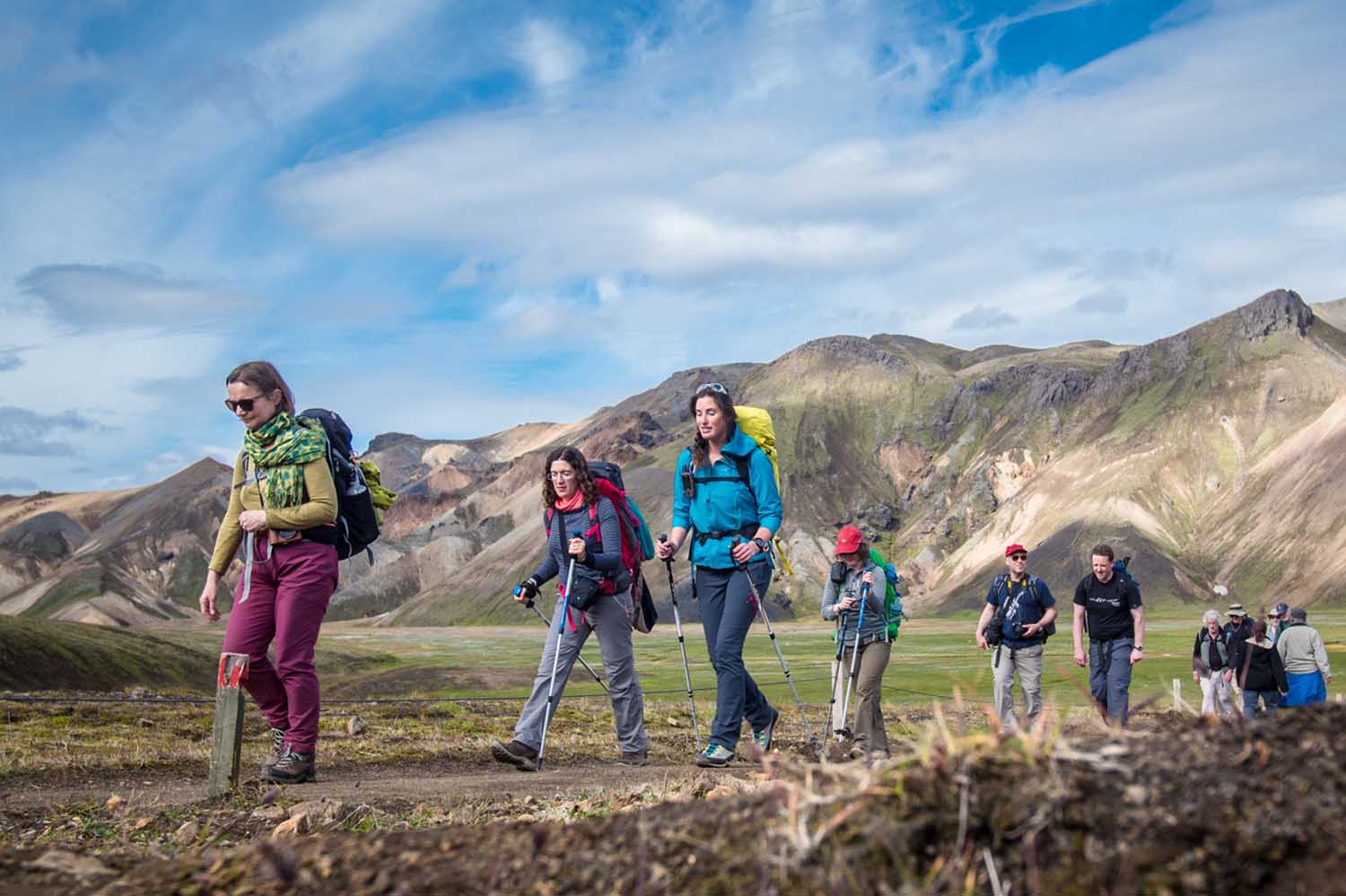
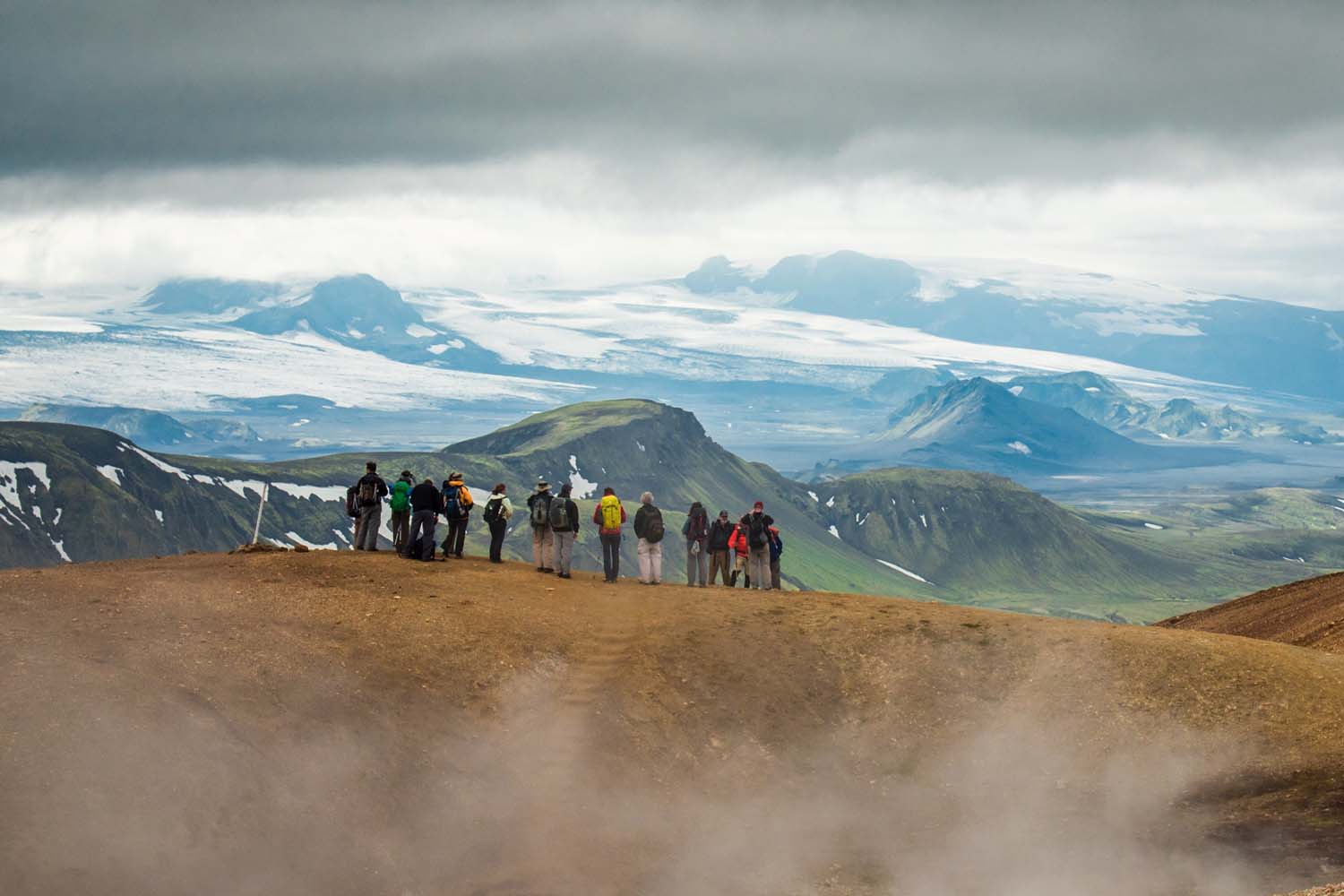
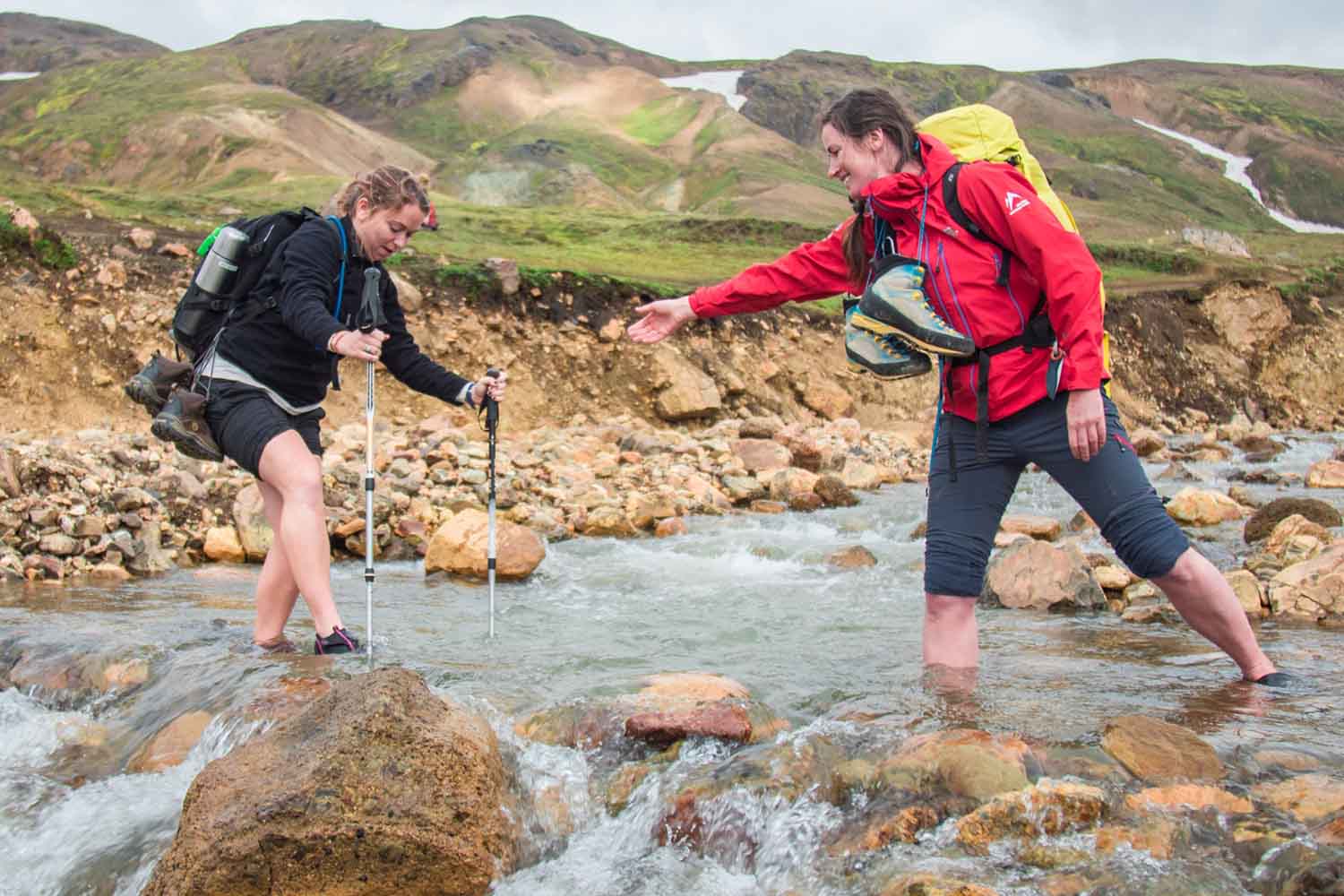
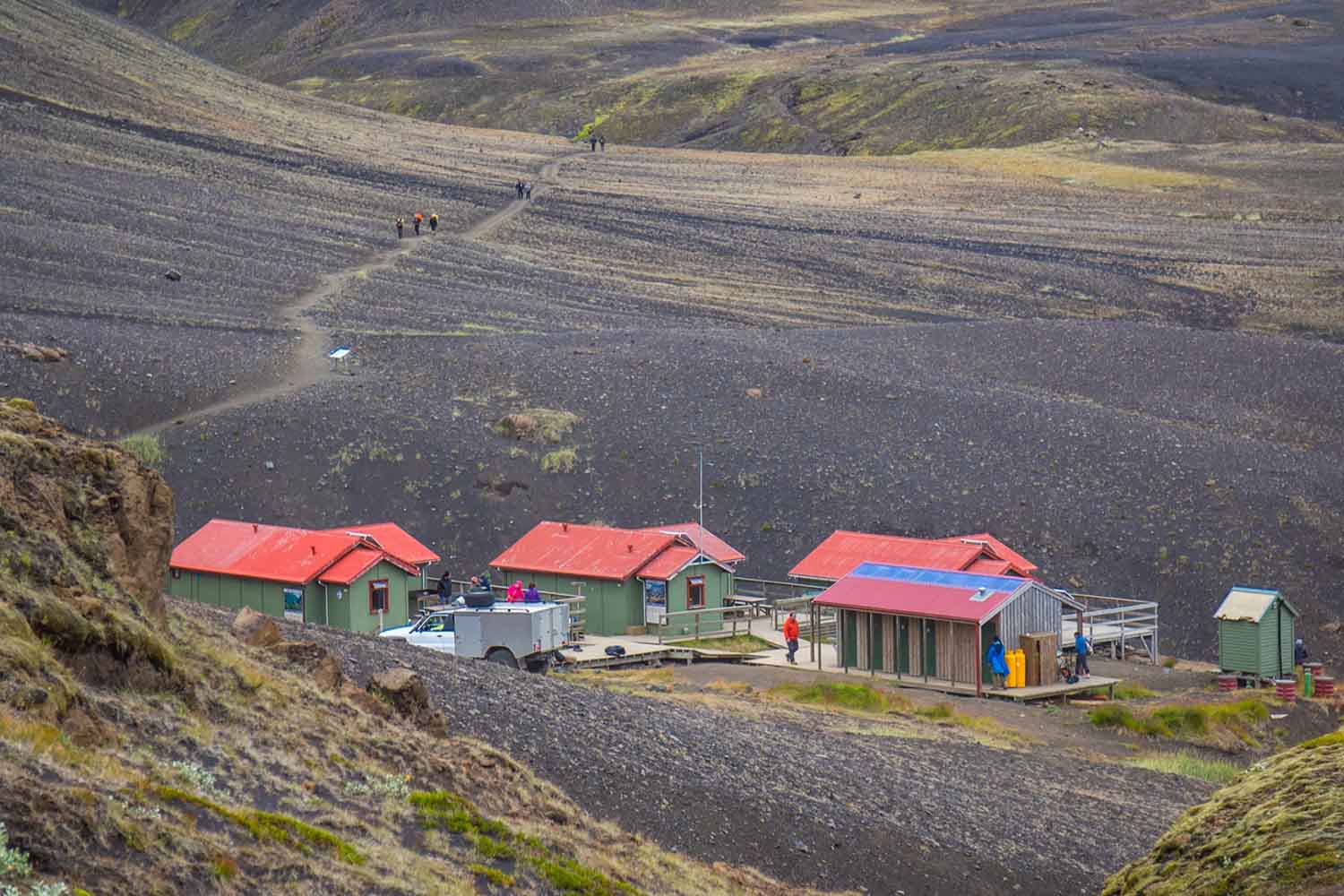
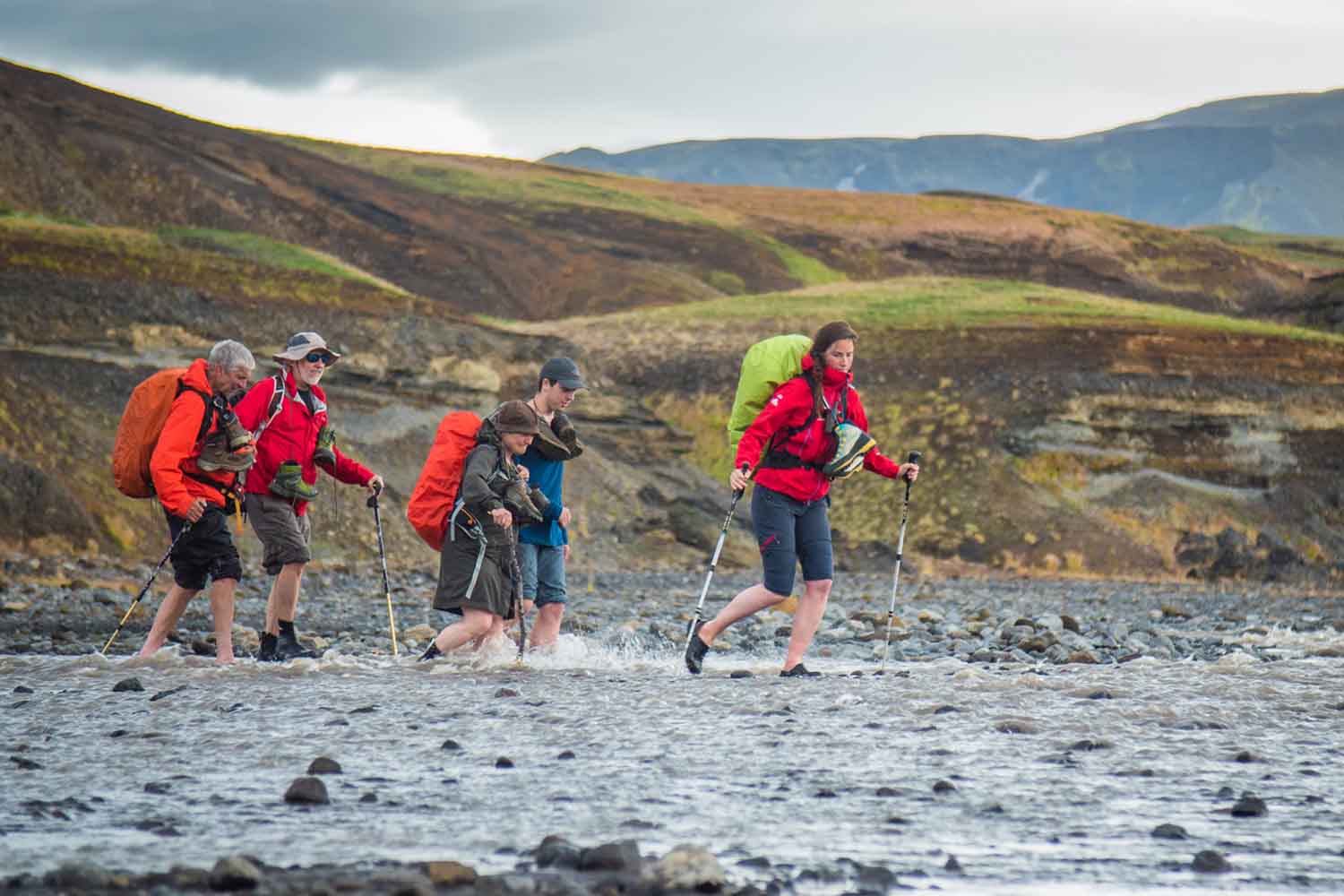
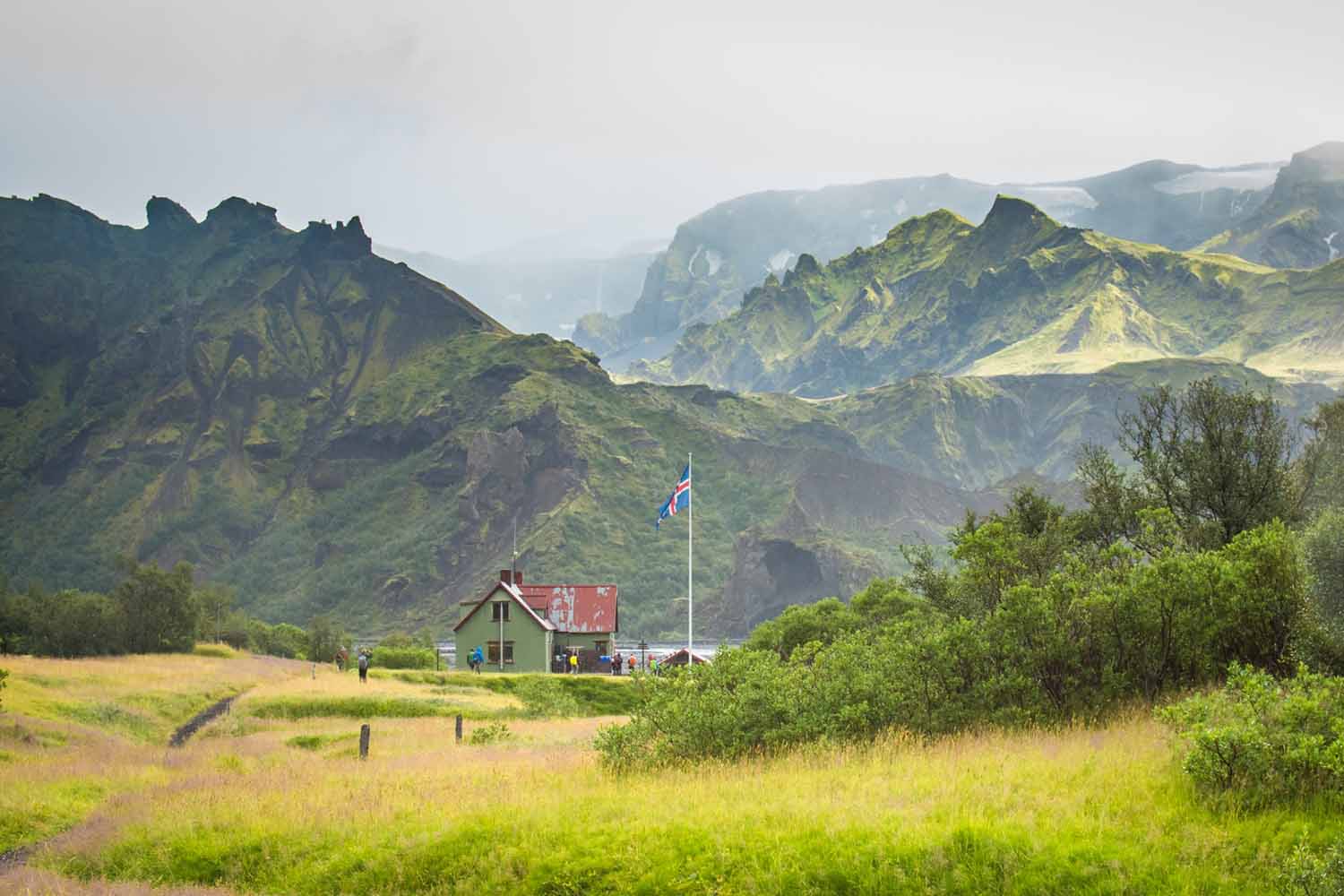
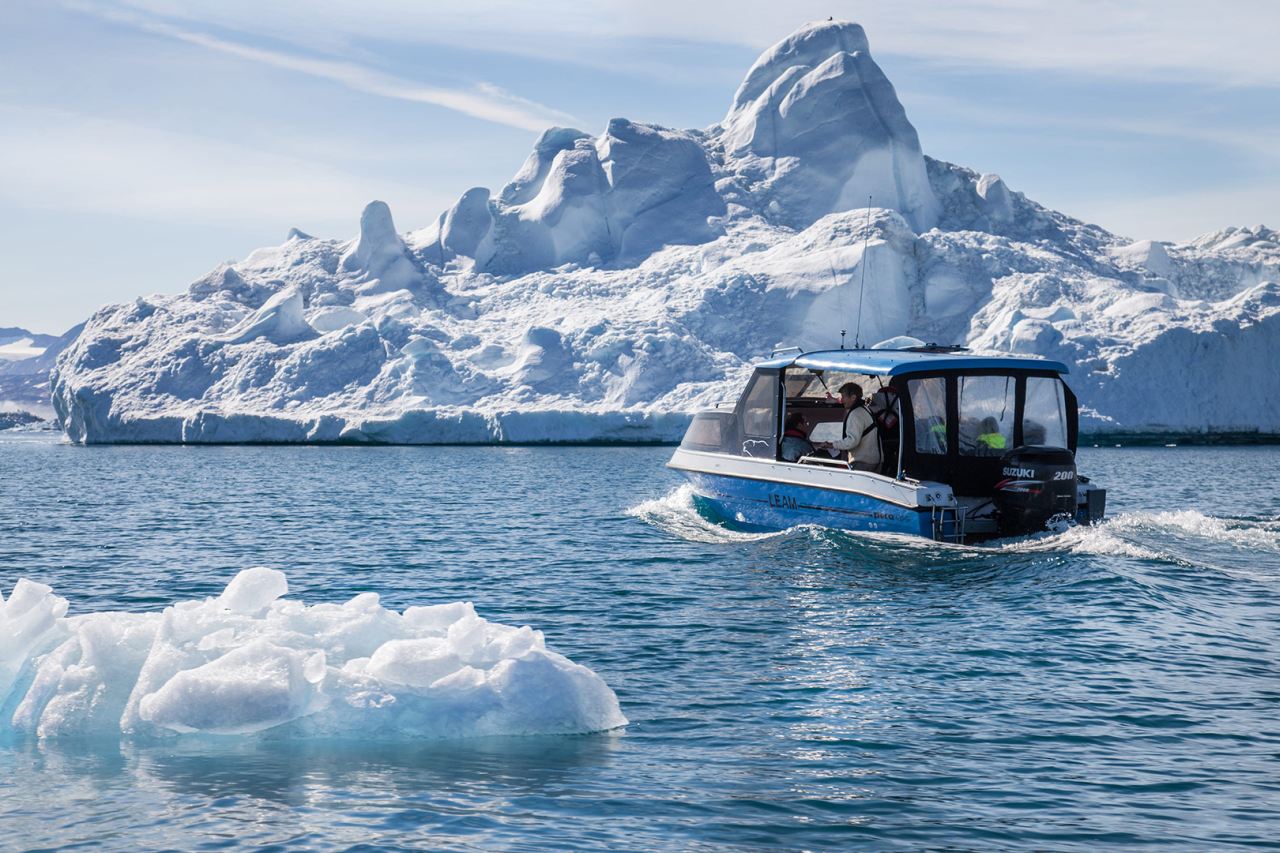
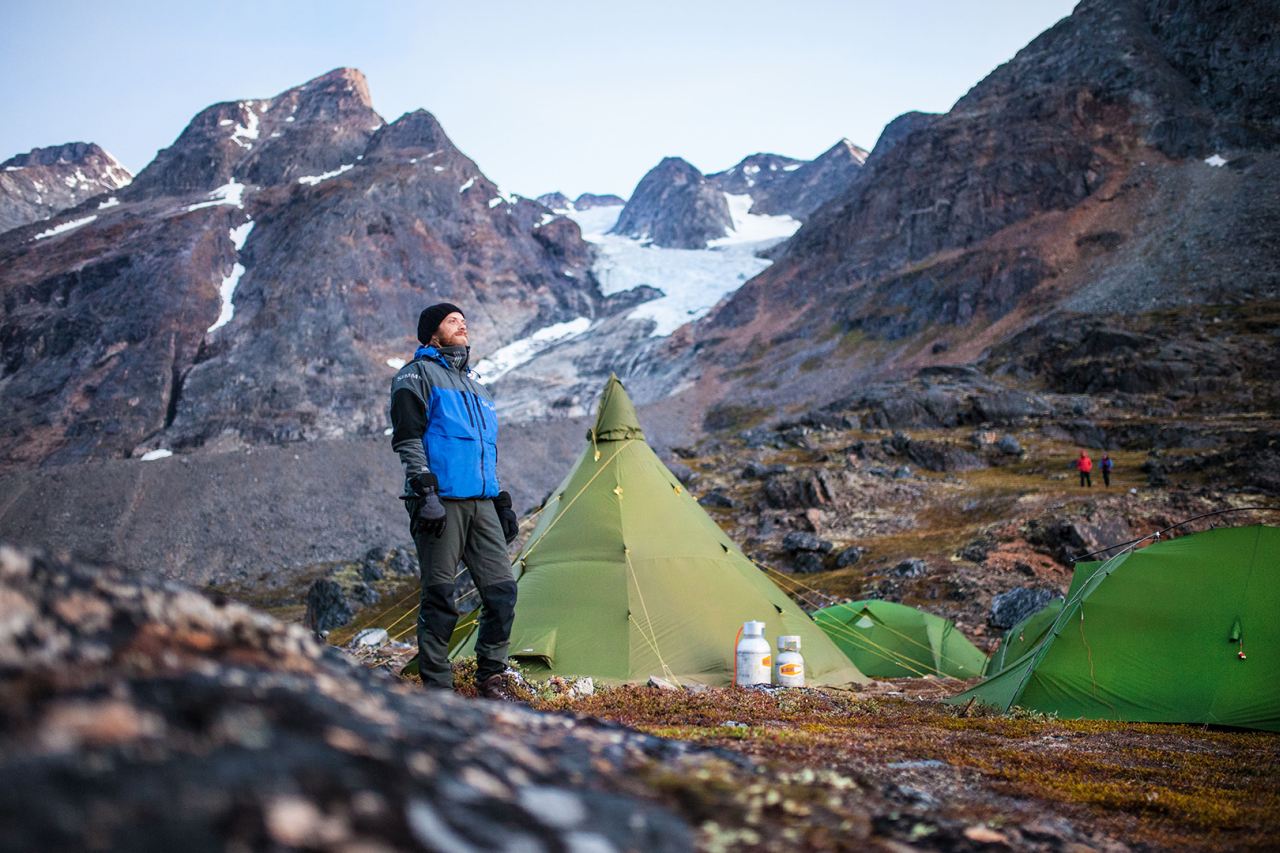
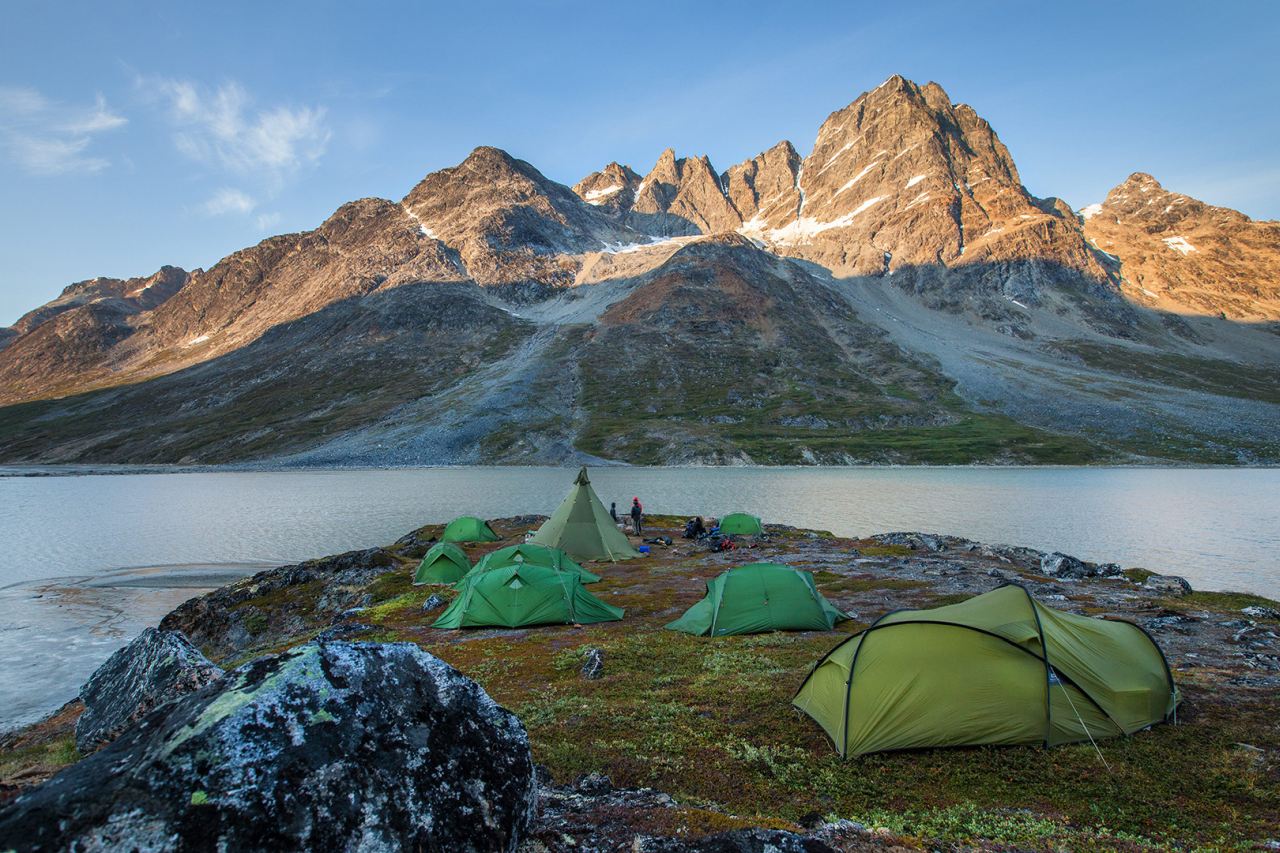
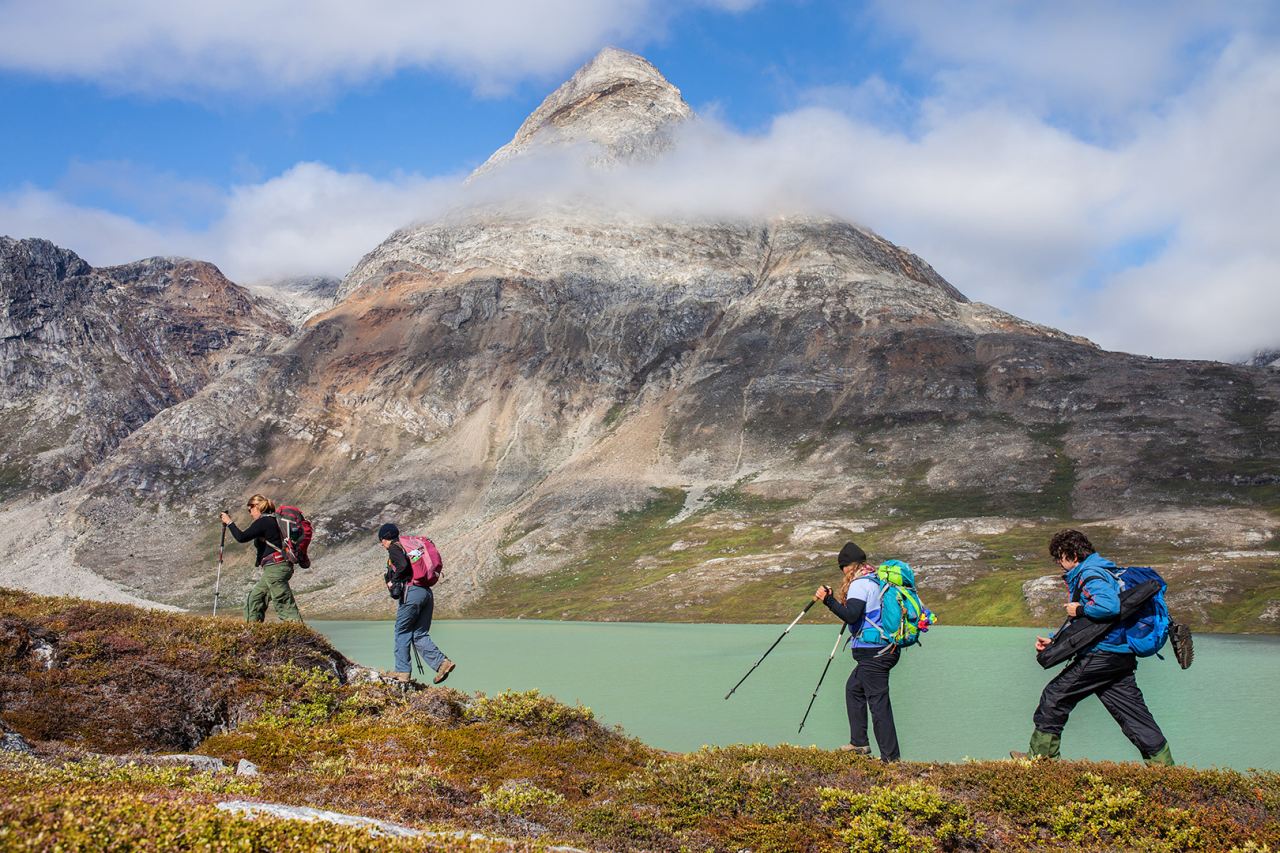
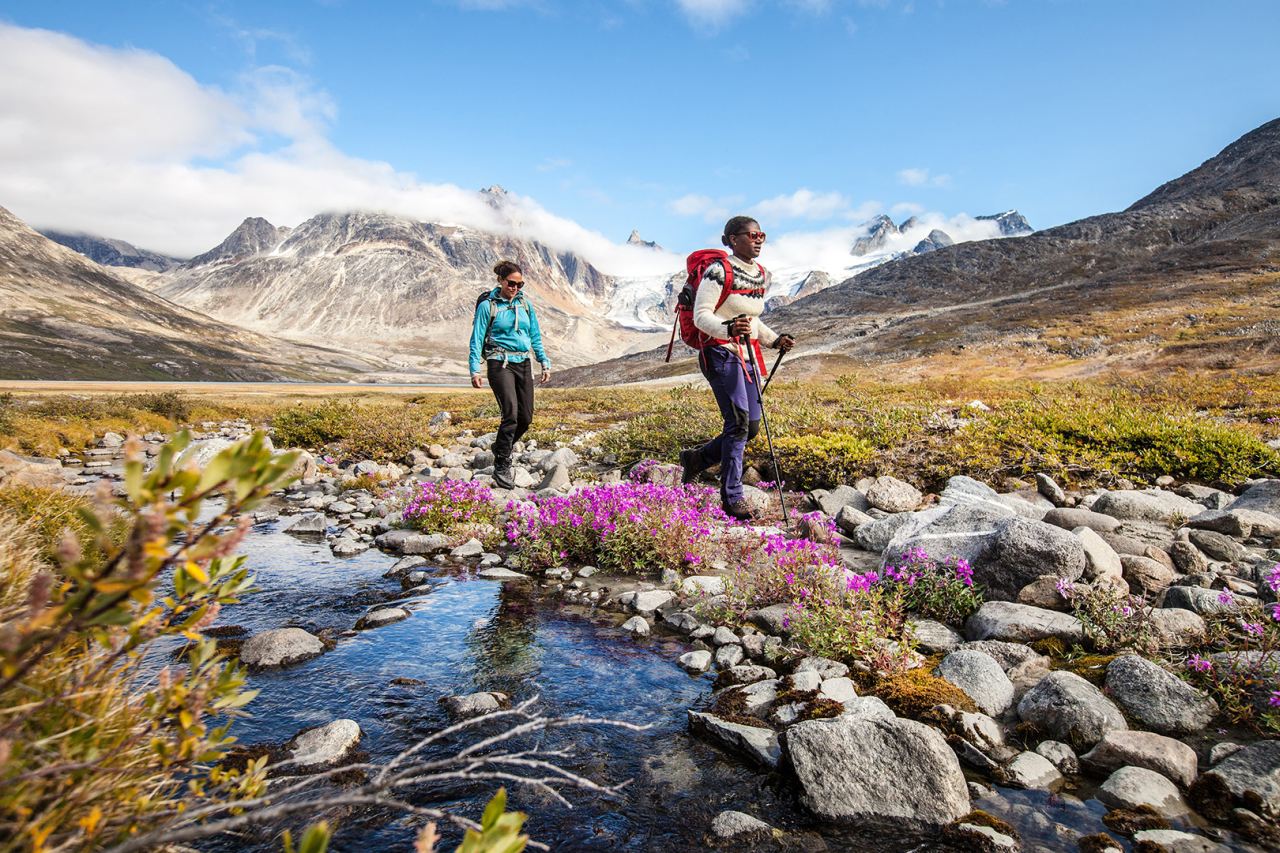
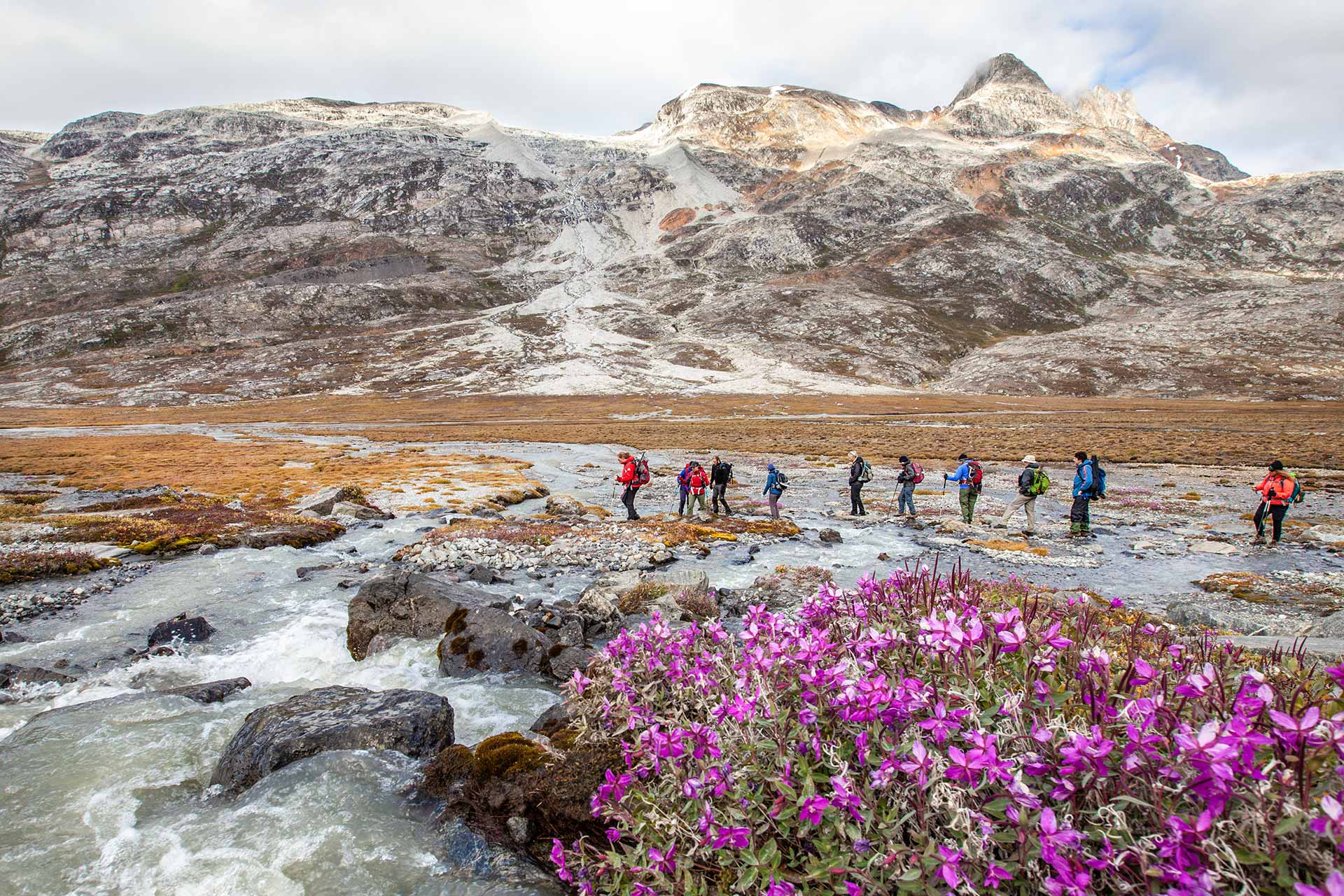
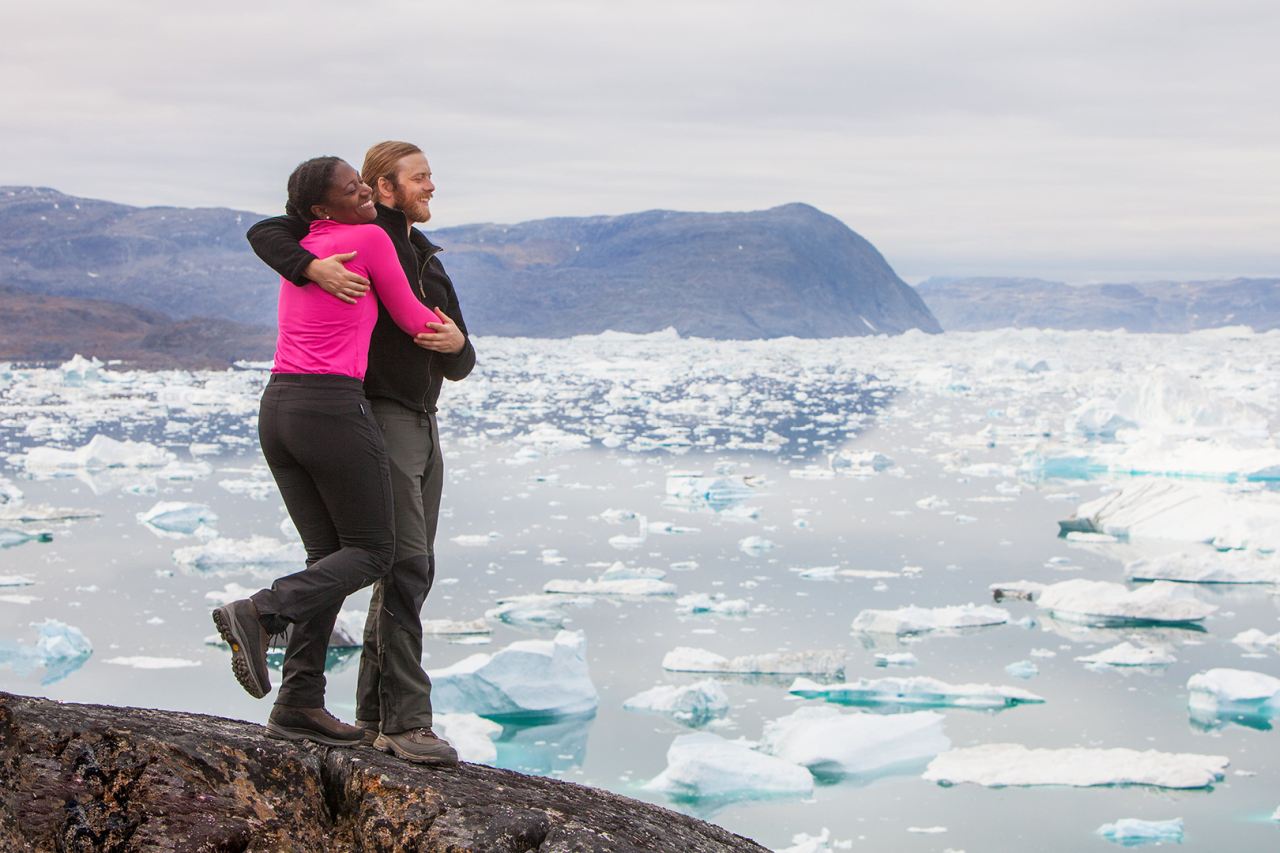
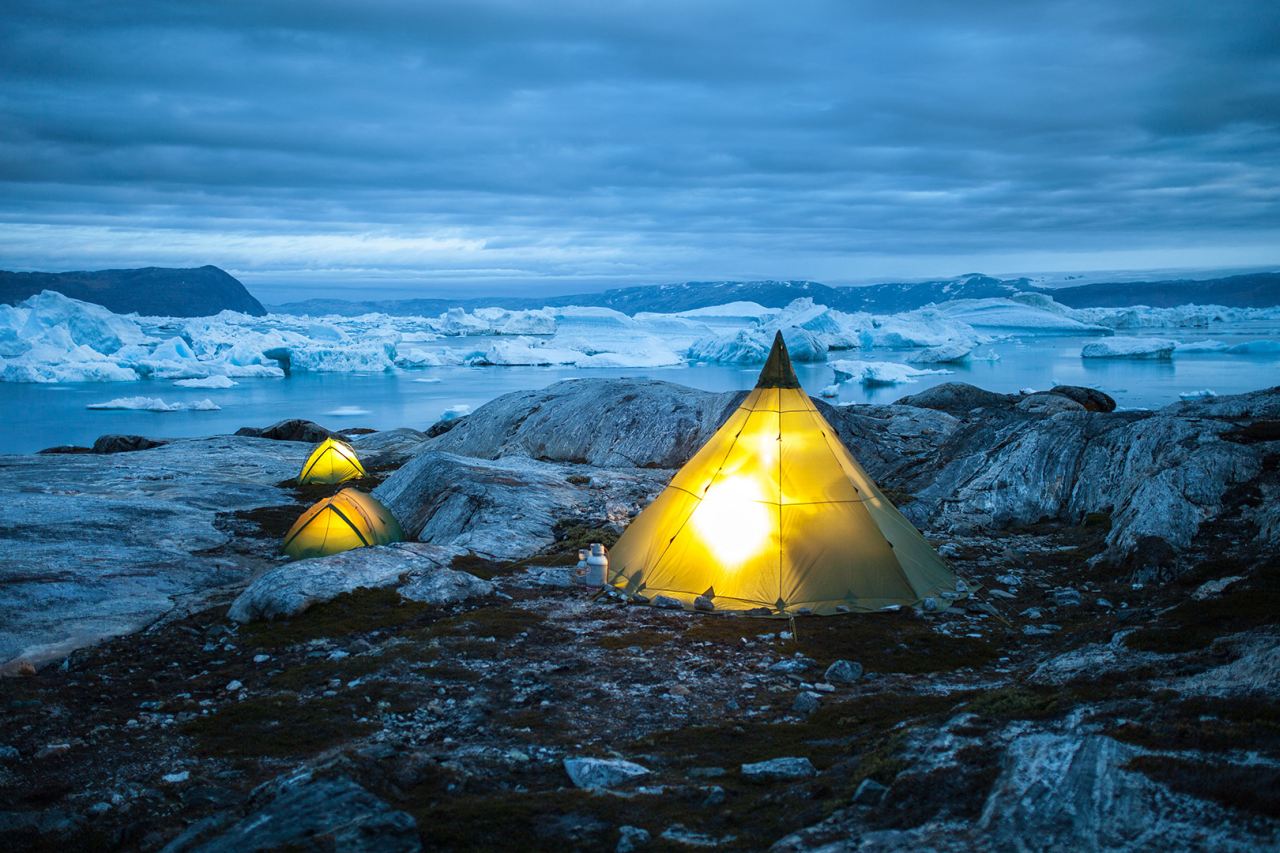
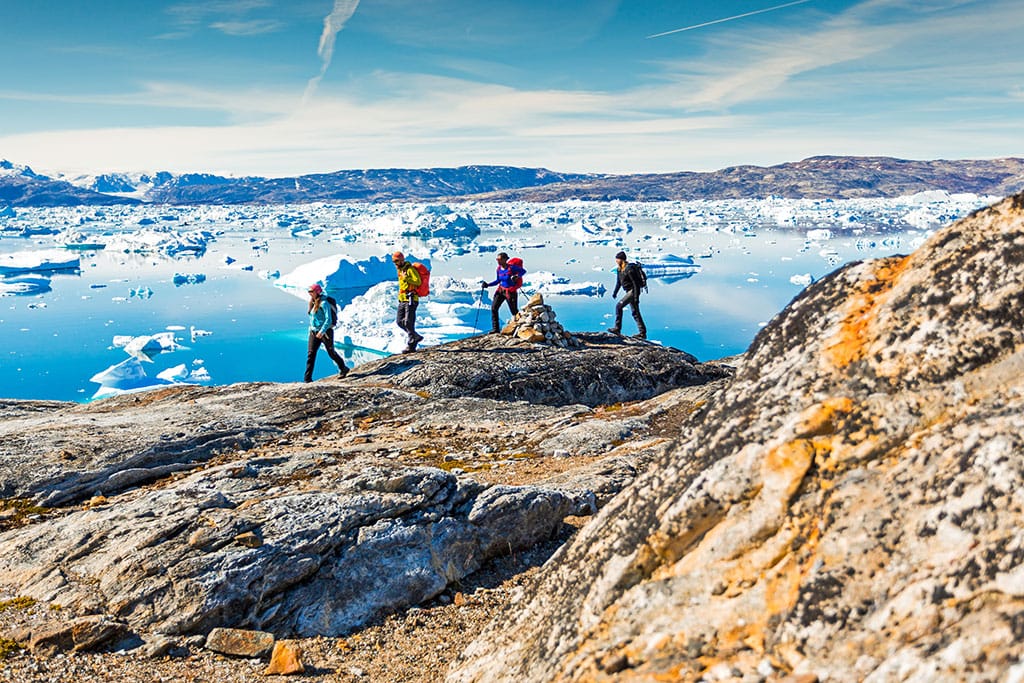

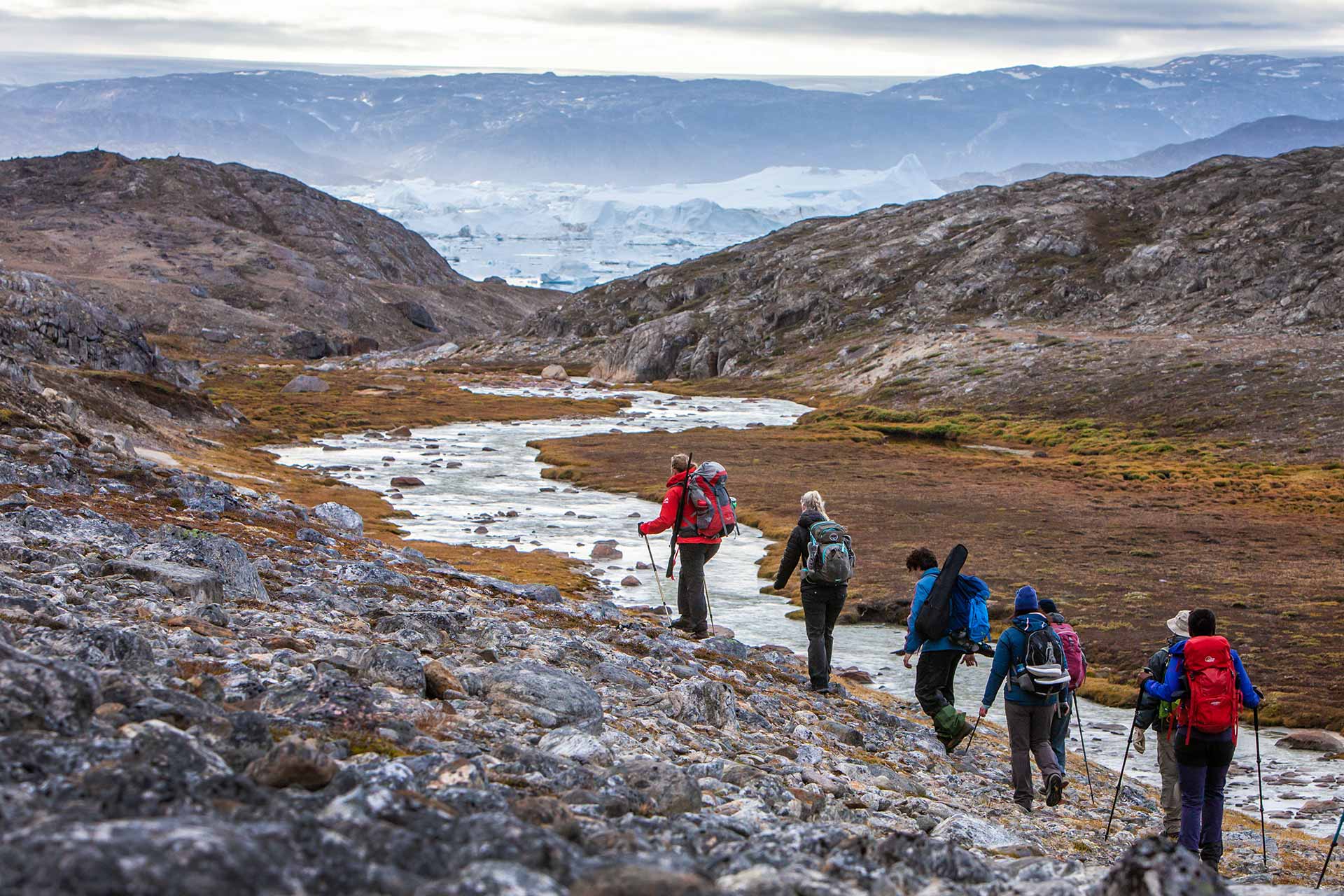
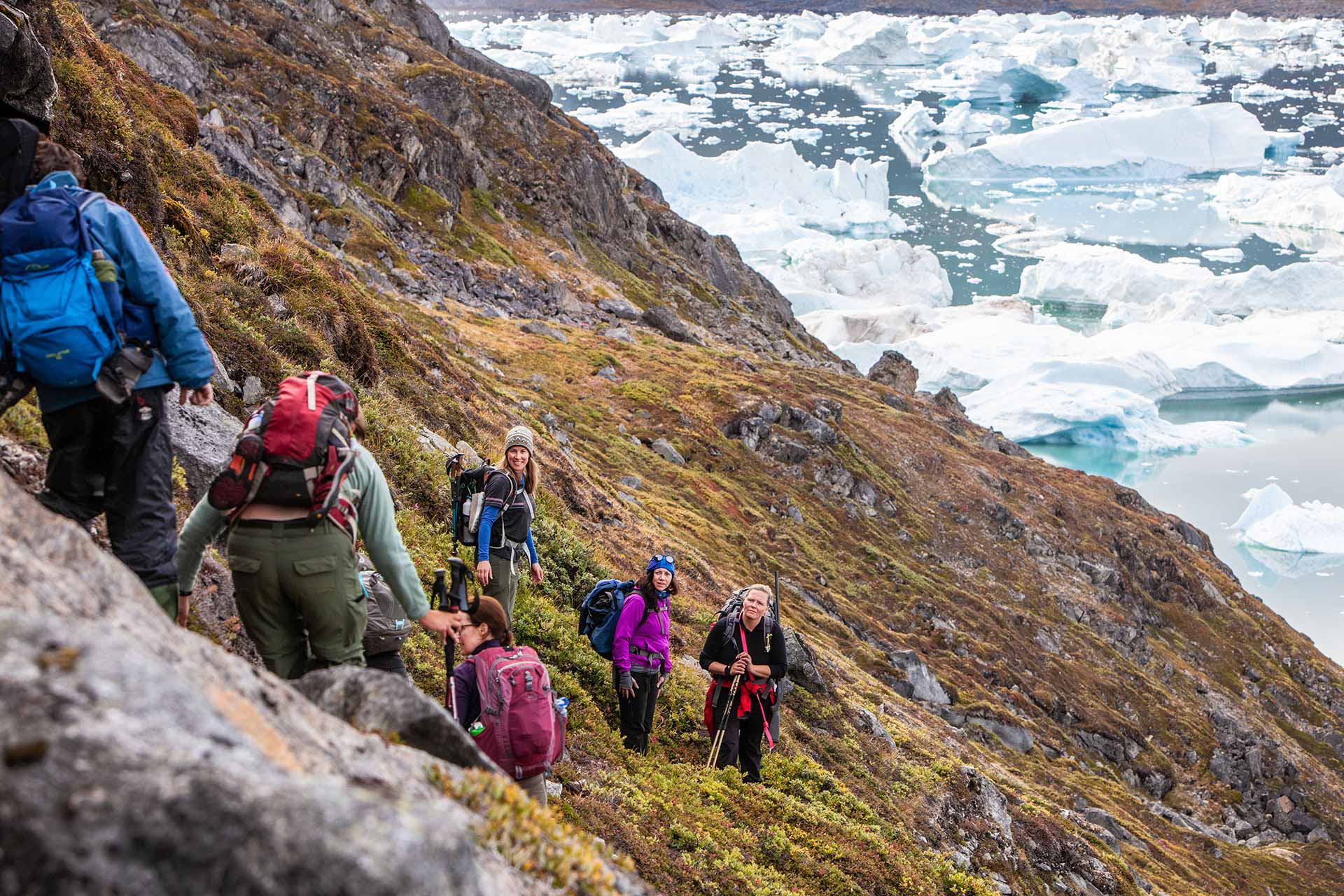
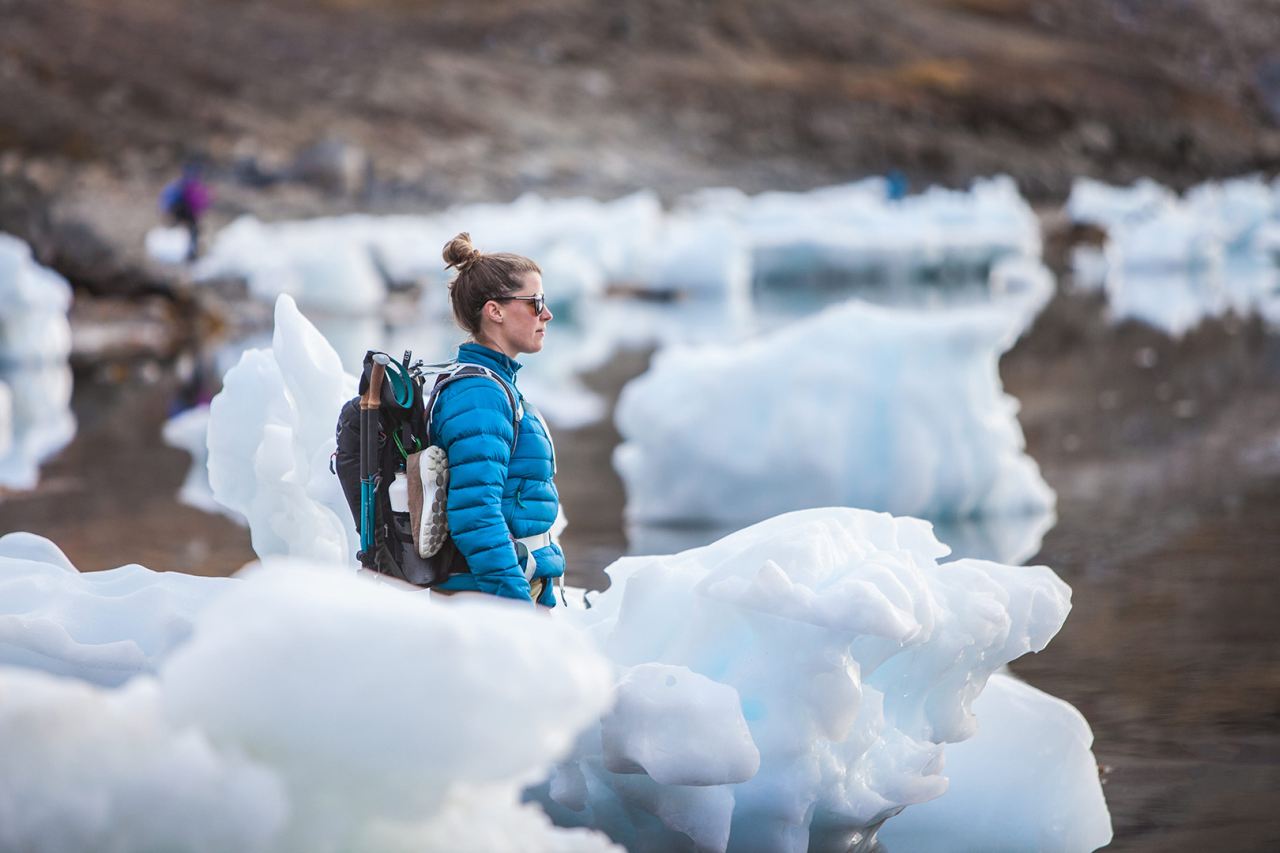
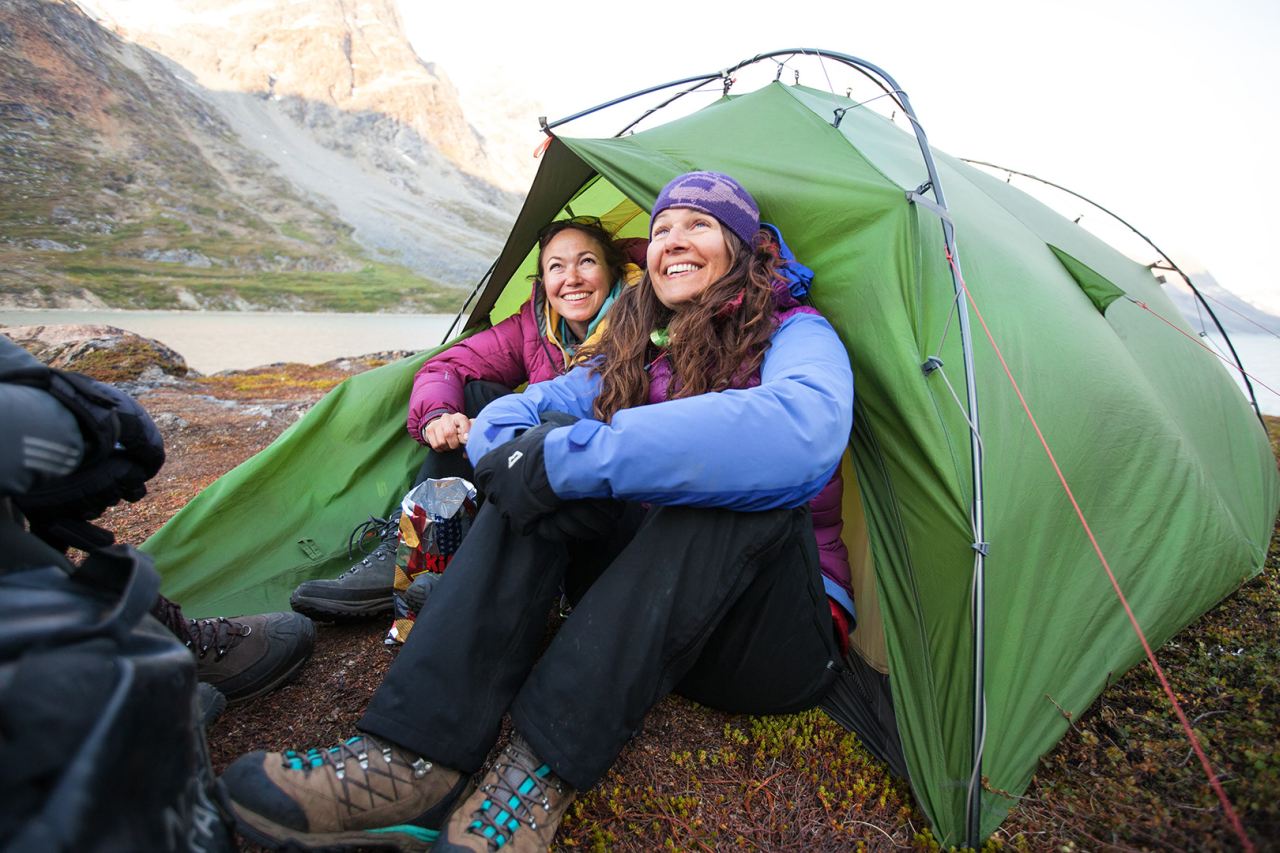
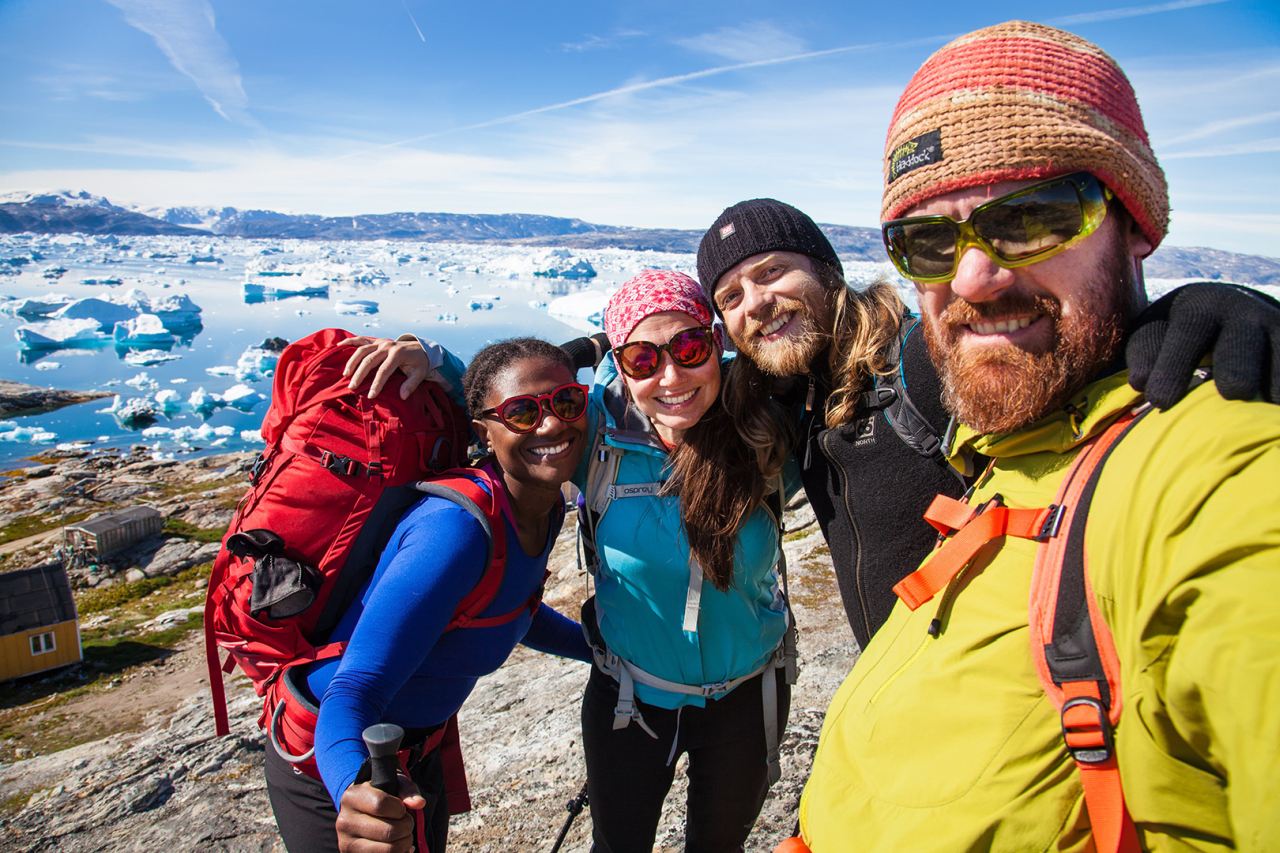
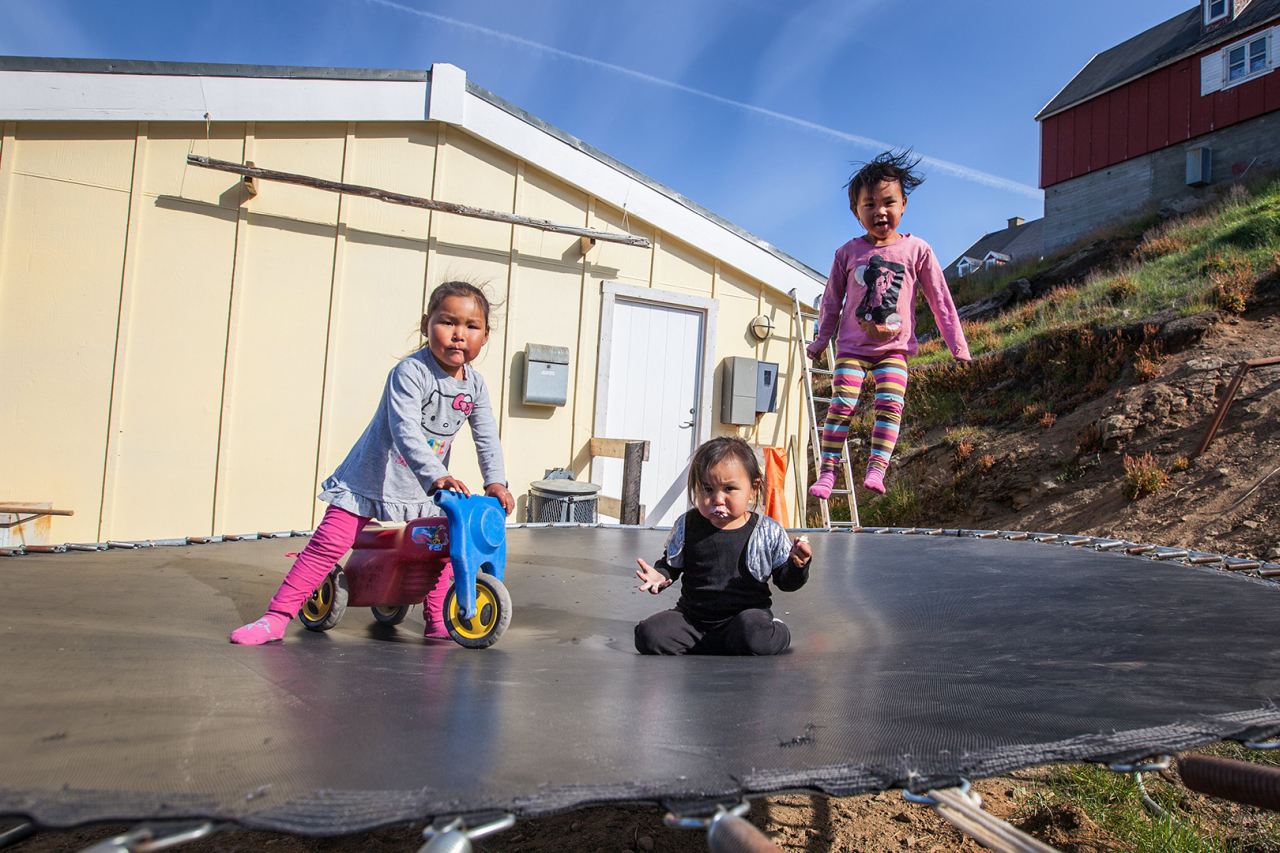
Tour type: Combined trekking tour with camping and hut accommodation
Difficulty: Difficulty:
Price from: Price from:
Adult: 616000
- JAN
- FEB
- MAR
- APR
- MAY
- JUN
- JUL
- AUG
- SEP
- OCT
- NOV
- DEC
What's included: Guide, return flights between Reykjavík and Kulusuk, accommodation (cabins/hostel/camping), Boat (GL) and bus (IS) transportation, luggage transfers.
Departures: July and August
Duration: 11 days
Meeting point: BSÍ Busterminal Reykjavík
Group size: 5 to 16 participants
Language: English
Walking per day: 4-7 hours
-
Tour Description
Highlights of the Tour
- The Famous Laugavegur Trek
- Colorful Mountains and Black Deserts
- A World of Ice
Get the best of two worlds! Start with Iceland’s most famous route, the Laugavegur trek, a five day trek from hut to hut. This trail takes you from the geothermal valley of Landmannalaugar south to the Þórsmörk valley, at the foot of world famous Eyjafjallajökull volcano. The trail crosses many spectacles including the third biggest geothermal zone in the world, through yellow rhyolite mountains, over black deserts, past great canyons and finally into the verdurous valley of Þórsmörk. Combine “Landmannalaugar - Þórsmörk” with “From Sun Gate to Icefjord” and the vast and pristine wilderness of Greenland. During these 6 days in East Greenland you will trek between camps with spectacular alpine mountain scenery as your backyard, along icefjords and visit an Inuit village. A dream combo-trek!
Included: Guides, breakfast (10), lunch (10), dinner (9). Accommodation: Mountain hut sleeping bag accommodation (4), guesthouse in Reykjavik (1), camping (4), Hostel in Kulusuk (1). Transportation: *Flights between Reykjavik and Kulusuk, bus to/from Reykjavík (Laugavegur trek), transfer between guesthouse and bus terminal / Reykjavík airport, boat transfers in Greenland and luggage transfers between camps in Iceland and Greenland.
* Flight rate is based on the lowest rate. Final price depends on which flight rate is available on the day of booking.
Not included: Dinner in Reykjavík, personal equipment, insurance and expenses.Accommodation in Reykjavík can be added before and/or after tour.
Private groups & tailor-made tours
Create the ultimate Greenlandic adventure for your group. You can choose to make one of our pre-existing intineraries a private tour or our travel experts can help you design a completely customized adventure from scratch to meet your group’s wants and needs. Our knowledgeable and friendly guides will ensure that your group has a fun and unique experience during your time in Greenland. Please send your group’s size, preferred dates and desired activities to [email protected]. We look forward to helping you create an adventure of a lifetime.If you have questions, please check our FAQs. If you do not find the answer please contact us: [email protected]
-
Tour Itinerary
Day 1: Reykjavík-Landmannalaugar-Hrafntinnusker
We take the regular bus at 07:30, that during the summer months drives the mountain tracks that lead to Landmannalaugar, passing by the Hekla volcano and other volcanoes in the Dómadalur area. Arriving in Landmannalaugar at noon, we have a lunch and then head south into the mountains. The trail takes us past small gorges, steaming hot springs and yellow mountain ridges. Arrival at Hrafntinnusker mountain hut, were we will stay the night, in the late afternoon.
Distance: 12km (7.5 mi) Walking time: 4-5 hrs Ascent: 470 m (1540 ')
Day 2: Hrafntinnusker-Álftavatn
From Hrafntinnusker we descend down in the gullies of Jökultungur with hundreds of steaming hot springs and mud pools. Up there we enjoy fascinating views to the south to the Álftavatn area (Swan Lake), and the Mýrdalsjökull and Eyjafjallajökull glaciers. In the afternoon we arrive at Álftavatn hut where we stay the night.
Distance: 12km (7.5 mi) Walking time: 4-5 hrs Descent: 490 m (1610 ')
Day 3: Álftavatn-Emstrur
We pass at the foot of the green conic volcano of Stórasúla before entering the black deserts of Mælifellssandur. Heading towards another ancient and verdurous volcano, the Hattfell, we enter the Emstrur region where farmers used to graze their sheep in summer. Before arriving at the Botnar hut where we stay the night, we visit the magnificent Markarfljót canyon cut almost 200 m down into the rocks south of Hattfell.
Distance: 16km (10 mi) Walking time: 6-7 hrs Descent: 40 m (130 ')
Day 4: Emstrur-Þórsmörk
We continue up and down through the small valleys and gullies of Emstrur, where the great Mýrdalsjökull glacier rises only a couple of kilometers away. At the end of the day the vegetation starts to grow thicker and higher as we descend in to Þórsmörk's (the woods of Thor) green valleys filled with arctic birch forests and colorful flowers. Night in one of the huts in Þórsmörk.
Distance: 17km (10.5 mi) Walking time: 6-7 hrs Descent: 300 m (985 ')
Day 5: Þórsmörk-Reykjavík
We spend the morning in Þórsmörk where we walk along one of numerous paths. For example, we can visit to the Sönghellir cave (“Song cave”), climb up the small mountain of Valahnúkur from where magnificent view can be enjoyed, before taking the afternoon bus to Reykjavík. Arrival at Reykjavik Harpa Concert Hall at 18:30, where the Iceland part of your trip comes to an end. Accomodation in a Guesthouse in ReykjavíkDay 6. Reykjavík- Kulusuk
You will be picked up at you hotel in the late morning to go to Reykjavík Airport where we join the rest of the group going to Greenland. After about a 2 hour flight, we arrive to Kulusuk late morning. We walk from the airport to the village of Kulusuk (3km/ 2m) - a village of some 300 inhabitants and visit the local shop as well as the tiny family run museum/collection. In late afternoon we travel with a speed boat to the Qinertivaq fjord passing beautiful icebergs along the way. We build our camp for the night at the bottom of the fjord, in a magnificent setting, surrounded by 1600m (5250 ) high, steep granite mountains.
Walking Distance: 2 (1.2 mi) Walking time: 1 hr Ascent/descent: 0 m Boat : 2 hrsDay 7. Sun Gate, Trout Lake and Sermilik Icefjord.
After breakfast we walk towards the Sun Gate mountain by the Trout Lake. Admire the reflection of the high mountains in the lake before continuing to its south end. After fording a small river we continue down a narrow valley still surrounded by high granite mountains. On our way we see rich arctic vegetation, willows, arctic craw berries and blue berries bushes (hardly lifting from the ground) and arctic flowers of all kinds, the most notable beeing the Arctic River Beauty. In the afternoon we start to get a view over to the west to the enormous Sermilik Icefjord, filled with icebergs of all sizes. The view is simply breathtaking with mountains and icebergs and the great Greenland Icecap lurring behind! Camp at the fjord.
Walking distance: 17 km (10.5 mi) Walking time: 7 hrs Ascent/descent: 300 mDay 8. Along Sermilik Icefjord to Paarnakajiit
We start our walk along the impressive icefjord. A tiny path takes us across steep boulder slopes and down to a small sand beach covered in small icebergs on low tide. A second beach has even more stranded icebergs. We cross the Iceberg Beach and on our way we ford a small river. We continue at the foot of high mountains, across scraped granite „whale backs“ and arctic tundra wetlands before arriving to a small peninsula called Paarnakajiit where we put up our camp.
Walking distance: 14 km (8,6 mi) Walking time: 6-7 hrs Ascent/descent: 200 mDay 9. Paarnakajiit to Amitsivartiva Narrow fjord
From the Peninsula we walk by a narrow lake before arriving to an small and shallow fjord with yet another very impressive amount of small icebergs and stranded on low tide. We continue along the fjord and from its end we cross some relatively flat moorlands, along a beautiful river until we arrive to a bigger lake. We ford a small river and continue along the deep, blue/green lake. In the afternoon we arrive to a very narrow fjord, where we put up our camp.
Walking distance: 12 km (7,5 mi) Walking time: 6 hrs Ascent/descent: 150 mDay 10. Amitsivartiva narrow fjord to Tiniteqilaaq and Kulusuk.
The day starts with the climb up along a mountain ridge abow the Sermilik Icefjord. We climb to a fantastic view point at 500 m (1800 ft) and admire the vast view over the Icefjord to the west and the „Matterhorn“ like mountains to the East. We continue along the ridge with great view on both hands until we descend into Tiniteqilaaq, a tiny hunters village with less than 200 inhabitants. After a short visit of the village we take a boat to Kulusuk for the last of the trip. Night in a hostel.
Walking distance: 14 km (8,6 mi) Walking time: 7 hrs Ascent/descent: 500 m Boat: 2 hrsDay 11. Kulusuk - Reykjavik
You can enjoy your last hours in Kulusuk, and later we will be back at the airport where our flight to Reykjavik will be waiting for us. The tour ends at Reykjavík Airport where we say our goodbyes.
*All of the huts are heated, some have electricity and some have hot water. They have bunk rooms with single and twin beds, participants have to be prepared to share a bunk with other travellers from the group.
Participants of this combo tour needs to be aware that there is the likelihood of two different guides for the Iceland part and the Greenland part. The participants of the Iceland part and the Greenland part may also vary.
-
Equipment List
Trekking Tours in Greenland
- Equipment list for Trekking Tours / Assisted Treks in Greenland
Boots and Clothing:
- Sturdy Hiking Boots – preferably waterproof with ankle support.
- Long sleeve shirt (thermal underwear) – Wool or synthetic.
- T-shirt (thermal underwear) – Wool or synthetic.
- Light wool or fleece sweater (2nd layer).
- Puffy jacket (e.g. Primaloft or down).
- Trousers – Strong and light material that dries quickly e.g. soft-shell.
- Jacket or an Anorak with a good hood – windproof, waterproof and breathable.
- Rain trousers – windproof, waterproof and breathable. Please note that full raingear is mandatory on all our tours.
- Gloves – Wool or synthetic.
- Socks – Wool or synthetic. Two or three pairs.
- Warm hat – Wool or synthetic.
Other gear:
- A duffel bag for the transport of your overnight gear between huts. Please avoid bringing a suitcase!
- Backpack for extra clothes and food during the day that can also be used when you go to the mountain hut. You need to be able to pack your sleepingbag, extra clothes, as well as the food (mostly dryfood) that will be devided beteween you and the other passengers before you hike up to the hut, A 50L pack should be enough. (3000 cu in)
- River shoes – Walking sandals or old running shoes with a good grip are a good choice, along with a pair of warm socks or neoprene socks. Open sandals or flip-flops will not do the job.
- Walking pole(s).
- Swimsuit for the hot spring in Landmannalaugar.
- Sleeping bag – A basic sleeping bag with no specific temperature rating is sufficient treks in huts/hostels – for camping tours we recommend a 3 or 4 season sleeping bag. The last few summers have been cold.
- Camping mattress
- Towel – light weight and packable.
- Sunglasses & sun protection.
- Water container – thermos flask or water bottle 0,5 – 1L.
- A box/container for your daily lunchs
- Headlamp for reading and getting around the hut/tent.
- Change of clothes for wearing in the hut/camp.
- Personal first aid kit – including blister care.
- Prescription medication and other personal health items.
- Toiletries; Toothbrush, toothpaste, soap etc.
- Earplugs
- Protection against flies (mosquito's); such at nets, repellants, etc.
Optional gear:
- Gaiters
- Neoprene socks – highly recommended for river crossings.
- Pen knife.
- Sun/rain Hat or a Cap. Shorts
- Thermal mat (for lunch breaks).
- Camera, spare batteries and a memory card or films.
- Dry-bags for electronics and extra clothing.
- Aperitif or other heart-warming spirits.
We provide
- Tents in Greenland
- Cooking gear and cutlery, plates and cups.
For your own wellbeing and safety we strongly suggest following the advice of our equipment list, this includes having good quality rain-gear, tops and bottoms! Also respect that cotton clothing is not appropriate for any strenuous outdoor activity – this includes jeans and t-shirts. Modern outdoor clothing is by far more comfortable and will greatly improve your experience. Gear transport in Greenland happens on boats with limited capacity – both in volume and weight – pleas limit your personal equipment to 15kg and pack it in a soft duffel bag or comparable.
Should you have any questions regarding this equipment list or the equipment on our tours feel free to contact [email protected]
-
Gear Lexicon
Trekking Tours
-
Map
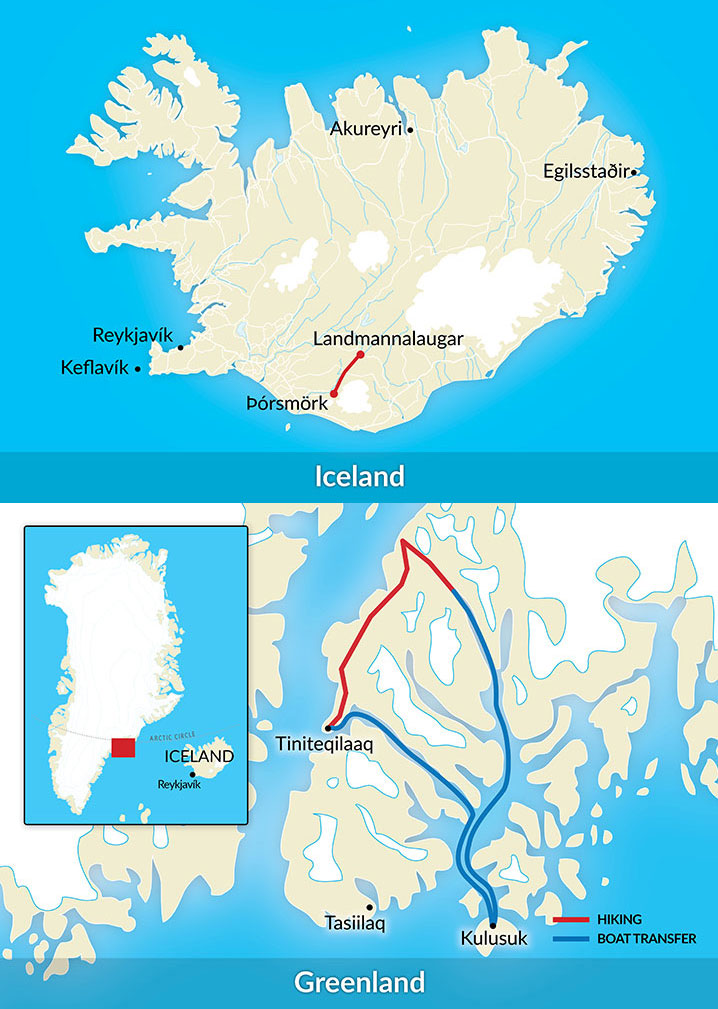
-
Tour Dates Details
2021 Departured Availability Available upon request
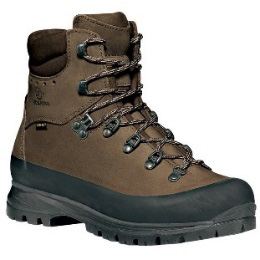
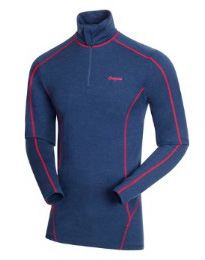




 See what our customers have to say about us!
See what our customers have to say about us!





